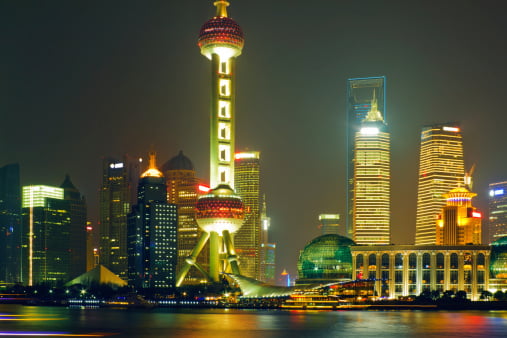A recession is defined as “a period of temporary economic decline during which trade and industrial activity are reduced, generally identified by a fall in GDP in two successive quarters.” But does the traditional definition apply to China, so long used to double-digit GDP growth? Probably not. Source: Thinkstock
Source: Thinkstock
Markit released its monthly PMI data for the China based on its April measurement. The report stated:
After adjusting for seasonal factors, the HSBC Purchasing Managers’ Index™ (PMI™) — a composite indicator designed to provide a single-figure snapshot of operating conditions in the manufacturing economy — posted at 48.1 in April, down fractionally from the earlier flash reading of 48.3, and up from 48.0 in March. This signalled the fourth successive monthly deterioration in the health of the sector.
Markit researchers described the situation as a “further deterioration in overall operating conditions.” With a number of 50 demarcating the difference between expansion and contraction, the comment was a generous assessment of China’s manufacturing activity.
READ MORE: Some U.S. Companies Have to Do Well in China
China’s economic engine is meant to, among other things, create the equivalent of tens of millions of middle-class jobs, as people move from rural areas into mega-cities with millions of residents. This middle class grows only insofar as demand for Chinese goods do. That demand comes primarily from overseas. China, however, would like to see some of that demand shift to its own population. As the economy of the People’s Republic grows, so does middle-class consumption, and China, the government hopes, becomes more like the United States, a nation in which most of gross domestic product is driven by consumer activity.
READ MORE: What Are the Most Popular Retailers?
The entire Chinese system breaks down if factory activity contracts and both the rate of wage increases for workers and the rate of increase in the expansion of the middle class stall.
Some of the signs of weakening beyond manufacturing have already begun. Foremost among these is a slowing of the remarkable increase in housing prices. After years of overheated increases, price improvements have been throttled by lower credit availability. And a slowing economy will only exacerbate that decline.
The specter of the effects of pollution has started to become part of the conversation about economic expansion. The problem is so severe that manufacturing activity, which has contributed to both water and air pollution, may need to be regulated. The discussion of this would have been heresy just two years ago. Now, pollution is considered one of the two or three largest hurdles China faces as it become more concerned about the health of its population as balanced against expansion.
China’s GDP growth has dropped to 7.4% a year. No one knows the level at which falling GDP will throw off the dynamics of the cycle that has kept the growth of the middle class at an extraordinary rate for a decade. The traditional definition of recession does not apply to China. The set of circumstances that have driven its economy are based on hyper-growth, and modest growth is not enough to feed the infrastructure the country has created to keep it stable.
Sponsored: Attention Savvy Investors: Speak to 3 Financial Experts – FREE
Ever wanted an extra set of eyes on an investment you’re considering? Now you can speak with up to 3 financial experts in your area for FREE. By simply
clicking here you can begin to match with financial professionals who can help guide you through the financial decisions you’re making. And the best part? The first conversation with them is free.
Click here to match with up to 3 financial pros who would be excited to help you make financial decisions.
Thank you for reading! Have some feedback for us?
Contact the 24/7 Wall St. editorial team.



